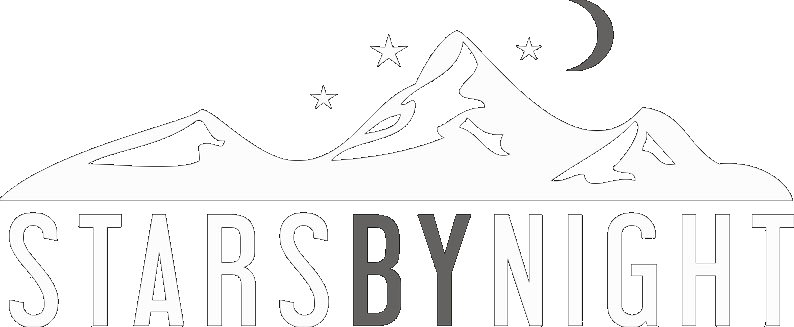Orion and his Dog stars, Sirius and Procyon
….It is always a good idea to take some time out to connect to Mother Nature and what better way than to look up at the night sky! The silence of a wild dark location, the ancient Mars like landscape and a starry night sky has a calming affect on the soul and mind. The changing months of the year see different celestial objects appearing on the Eastern horizon and disappearing on the Western. A beautiful celestial dance that is a wonder to observe.
The month of March starts with beautiful dark skies, with the New Moon on the 2nd, allowing us to appreciate the awesome magnitude of the universe, with even the faintest and most distant of stars being visible. The most distant object visible from Earth, The Andromeda Galaxy should be visible with the naked eye and the beautiful shape of the Orion nebula, at its best to observe with the telescope. The Moon then starts her dance, setting later each night and at the same time becoming increasingly illuminated by our sun! The 18th of March sees the Full Moon, sometimes know as the Worm Moon or Crow Moon signifying the start of Spring. The Spring Equinox arrives on the 20th March this year, seeing our Sun cross the equator from south to north. I wonder if the ancient people were sat in the Coral de Asemblea, in Tindaya to observe the sun rising on this day!
Best stargazing from March 1st to March 9th, after which the bright Moon takes over and becomes the Protagonist of the night sky. The darkness returns to our observations from the 21st of March, with the Moon rising after midnight. Check out our booking calendar for monthly activities.
Clear skies to everyone!
..
¡Siempre es buena idea tomar una pausa para volver a conectar con Madre Naturaleza y no hay mejor manera de hacerlo que mirando al cielo de noche! El silencio de un lugar salvaje y oscuro, el antiguo paisaje que parece a Marte y una noche estrellada tienen une efecto calmante sobre el alma y la mente. Los meses que cambian a lo largo del año vienen acompañados de varios objetos celestiales que aparecen en el horizonte del Este y desaparecen al Oeste. Un precioso baile celestial que es una maravilla a observar.
El mes de marzo empieza con preciosos cielos oscuros, con la Luna Nueva el día 2, que nos permite apreciar la magnitud impresionante del universo, cuando se puede ver hasta la estrella la más débil y lejana. El objeto el más lejano que se puede ver desde la Tierra, la Galaxia de Andrómeda, se tendría que poder ver a simple vista y la preciosa forma de la Nebulosa de Orión será a su mejor para su observación con un telescopio. Luego, la Luna empieza su baile, y se pone más y más tarde cada noche, al mismo tiempo que está cada vez más iluminada por el Sol. La Luna Llena ocurre el día 18 de marzo, que también se llama a veces la Luna de gusano o Luna del cuervo, que significa la llegada de la Primavera. El Equinoccio de Primavera este año llega el día 20 de marzo, cuando el Sol cruza el ecuador del Sur hacia el Norte. ¡Me pregunto si las poblaciones indígenas se sentaban en el Coral de Asamblea en Tindaya para observar la salida del sol ese día!
El mejor momento para observar las estrellas será entre el día 1 y el día 9 de marzo, tras lo cual la Luna brillante se convierte en la protagonista del cielo de noche. La oscuridad vuelve después del día 21 de marzo cuando podremos retomar nuestras observaciones, con la Luna que sale después de medianoche. Os recomendamos dar un vistazo a nuestro calendario de actividades mensuales. Y para vosotros, los perseguidores de la Vía Láctea, ahora se puede ver saliendo en la costa Este temprano por la mañana.
¡Cielos despejados para todos!
….

















